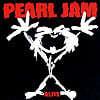I put on new gauge strings...help!
djyman15
Posts: 181
I went from 9s to 10s, GHS boomers(of course:)). Anyone know how to adjust the setup of my guitar to make the thing sound right? Also what tools will I need?
"Even if your heart would listen, I doubt I could explain"-Jimmy Eat World
Post edited by Unknown User on
0
Comments
-
get out your allen wrench and turn the truss rod to the right a few turns to provide more neck tension.My Girlfriend said to me..."How many guitars do you need?" and I replied...."How many pairs of shoes do you need?" She got really quiet.0
-
ok dumb question: do i adjust from by the headstock or do i need to take off the neck?"Even if your heart would listen, I doubt I could explain"-Jimmy Eat World0
-
headstock.My Girlfriend said to me..."How many guitars do you need?" and I replied...."How many pairs of shoes do you need?" She got really quiet.0
-
thanks! now all I need to do is find my allen wrench........"Even if your heart would listen, I doubt I could explain"-Jimmy Eat World0
-
My only advice is work slowly... a bit at a time....and if you don't like it, you can suck on an egg.0
-
You might need to intonate the bridge saddles too. Sometimes the thicker strings change that. Easy. ( use a tuner, if the tuning is off at the twelfth fret. If the string is flat at the twelfth, bring the saddle towards the nut with an allen wrench, if it is sharp, move the saddle away) only do this after the neck is adjusted where you want it.
Sometimes you may need to enlarge the nut slots for the bigger string. Potentially not easy, but most likely not needed.
Like those guys say, tighten the truss rod only a tiny bit at a time. Even less than a quarter turn. And if it's an old guitar, you may want to loosen it a tiny bit before you tighten it in case it's stuck.
It should be a law that A copy of Guitar Player Repair Guide should be handed out with every guitar sold! Great book for all kinds of guitar maintainence and repairs.
By Dan Erlewine,, a really really nice guy. And it covers all kinds of stuff like this.
10's will sound much better! you'll like it!Be kind, man
Don't be mankind. ~Captain Beefheart
__________________________________0 -
Not as good as 11's would sound, trust me. : )7-9-03 New York(MSG II baby!)
9-4-05 Calgary (10c Tix!)
8-8-09 Calgary
9-21-12 Calgary (10c Tix! Row 12!!)
My URL
http://www.myspace.com/thehuskytruckers
http://www.facebook.com0 -
Originally posted by WiLL75
Not as good as 11's would sound, trust me. : )
I use 11's and 12's, you're right.
I didn't want to tell him that yet! 12's definitely break in the fingers!
12's definitely break in the fingers!
There is a big improvent from 9's to 10's though.Be kind, man
Don't be mankind. ~Captain Beefheart
__________________________________0 -
i might have moved up to 11s, but i dont want to kill my fingers, which is what id suspect it would do after playing 9s"Even if your heart would listen, I doubt I could explain"-Jimmy Eat World0
-
Originally posted by who's_pearljam?
You might need to intonate the bridge saddles too. Sometimes the thicker strings change that. Easy. ( use a tuner, if the tuning is off at the twelfth fret. If the string is flat at the twelfth, bring the saddle towards the nut with an allen wrench, if it is sharp, move the saddle away) only do this after the neck is adjusted where you want it.
Sometimes you may need to enlarge the nut slots for the bigger string. Potentially not easy, but most likely not needed.
Like those guys say, tighten the truss rod only a tiny bit at a time. Even less than a quarter turn. And if it's an old guitar, you may want to loosen it a tiny bit before you tighten it in case it's stuck.
It should be a law that A copy of Guitar Player Repair Guide should be handed out with every guitar sold! Great book for all kinds of guitar maintainence and repairs.
By Dan Erlewine,, a really really nice guy. And it covers all kinds of stuff like this.
10's will sound much better! you'll like it!
wouldn't that be the other way around. Flat Away from the nut. Sharp towards the nut, by way of string tension?My Girlfriend said to me..."How many guitars do you need?" and I replied...."How many pairs of shoes do you need?" She got really quiet.0 -
Originally posted by Pacomc79
wouldn't that be the other way around. Flat Away from the nut. Sharp towards the nut, by way of string tension?
Uh Oh!,,,,,,,hmmmmm,,,,,,!
The tuners control the string tension. The length of the string on the frets controls intonation.
Think of the fretboard as 24 inches between the nut and the bridge saddles. The e string is tuned at a perfect E.
If you fret at the 12th fret, it's halfway, an octave, 12" from the bridge should be E.
If it sharp (higher than E) you need to lengthen the string by moving the saddle away to make the string longer.
If flat ( lower ) then you shorten the string by moving in towards the nut.
(in reality, it needs to be more than 12 inches because of compensation issues, but really, you just do it with a tuner.)
When you put thicker strings on, you usually need to lengthen the span because the will sound sharp at the 12th.
Similar to when you look at the bridge, the saddles for the thicker strings are progressively farther from the nut.
If the neck is dead straight, it's longer. but if you adjust it a bit for "relief" you need to intonate again. That's why you wait till the neck is where you want it first.
Whew! I could use a pina colada after that!Be kind, man
Don't be mankind. ~Captain Beefheart
__________________________________0 -
hey, a few weeks ago i put new gauge strings onto my strat copy..i originally had 10's but i put 11's on. and i've got a few problems. the bridge on the strat now seems to be 'pulled up' by the strings. think of what happens to the bridge when you use the tremelo, it is kinda like that permanently. also, if i'm playing in standard, and then i take it down the drop d, all the other strings seem to go out of tune about a quarter of a tone too high. what do i need to do to compensate for these problems? thanks for any help.seems that needlessly its getting harder0
-
Release- I had a similar problem too with higher guage strings. Just remove the back plate and tighten the screws that hold the springs until it rests flat on the guitar body.
-lowwww.myspace.com/eotoband0 -
Originally posted by who's_pearljam?
Uh Oh!,,,,,,,hmmmmm,,,,,,!
The tuners control the string tension. The length of the string on the frets controls intonation.
Think of the fretboard as 24 inches between the nut and the bridge saddles. The e string is tuned at a perfect E.
If you fret at the 12th fret, it's halfway, an octave, 12" from the bridge should be E.
If it sharp (higher than E) you need to lengthen the string by moving the saddle away to make the string longer.
If flat ( lower ) then you shorten the string by moving in towards the nut.
(in reality, it needs to be more than 12 inches because of compensation issues, but really, you just do it with a tuner.)
When you put thicker strings on, you usually need to lengthen the span because the will sound sharp at the 12th.
Similar to when you look at the bridge, the saddles for the thicker strings are progressively farther from the nut.
If the neck is dead straight, it's longer. but if you adjust it a bit for "relief" you need to intonate again. That's why you wait till the neck is where you want it first.
Whew! I could use a pina colada after that!
Brilliant o wise one.
Release, turn your guitar over, unscrew the plate on the back of the body. See the bottom of the tremelo with the springs. You need to add a couple of springs or tighten the screws holding them in place. Then you need to add a few turns to the truss rod and reset the intonation as Who's Pearljam has instructed.My Girlfriend said to me..."How many guitars do you need?" and I replied...."How many pairs of shoes do you need?" She got really quiet.0 -
hey, sorry, i am a real dumbass when it comes to things like this, what is the 'truss rod'?seems that needlessly its getting harder0
-
truss rod is in the middle of the neck. theres a sopt to turn it near the headstock. its easy when you see it. it adjusts the tension on the neck"Even if your heart would listen, I doubt I could explain"-Jimmy Eat World0
-
The truss rod is a metal bar that runs through the neck in a curve. It helps to keep the neck stable.
When you tighten the nut, it wants to pull the neck back, when you loosen it, the neck will bow forward, so like they say, you fine tune the neck to the force of the pull of the strings. Heavy strings pull harder and want to bow the neck forward, and also pull harder on the trem springs, which is why ithe bar sticks out farther. So when you put heavier strings on, you gotta make all those adjustments.
You'll like the heavier strings. they sound much more powerful!Be kind, man
Don't be mankind. ~Captain Beefheart
__________________________________0
Categories
- All Categories
- 149.1K Pearl Jam's Music and Activism
- 110.2K The Porch
- 283 Vitalogy
- 35.1K Given To Fly (live)
- 3.5K Words and Music...Communication
- 39.4K Flea Market
- 39.4K Lost Dogs
- 58.7K Not Pearl Jam's Music
- 10.6K Musicians and Gearheads
- 29.1K Other Music
- 17.8K Poetry, Prose, Music & Art
- 1.1K The Art Wall
- 56.8K Non-Pearl Jam Discussion
- 22.2K A Moving Train
- 31.7K All Encompassing Trip
- 2.9K Technical Stuff and Help


